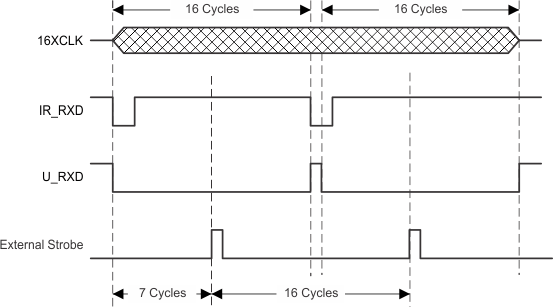SLLS228G December 1995 – August 2015 TIR1000
UNLESS OTHERWISE NOTED, this document contains PRODUCTION DATA.
- 1 Features
- 2 Applications
- 3 Description
- 4 Revision History
- 5 Pin Configuration and Functions
- 6 Specifications
- 7 Detailed Description
- 8 Application and Implementation
- 9 Power Supply Recommendations
- 10Layout
- 11Device and Documentation Support
- 12Mechanical, Packaging, and Orderable Information
Package Options
Mechanical Data (Package|Pins)
Thermal pad, mechanical data (Package|Pins)
- PS|8
Orderable Information
6 Specifications
6.1 Absolute Maximum Ratings
over operating free-air temperature range (unless otherwise noted) (1)| MIN | MAX | UNIT | |||
|---|---|---|---|---|---|
| VCC | Supply voltage(2) | –0.5 | 6 | V | |
| VI | Input voltage at any input | –0.5 | VCC + 0.5 | V | |
| VO | Output voltage | –0.5 | VCC + 0.5 | V | |
| TA | Operating free-air temperature range | TIR1000 | 0 | °C | |
| TIR1000I | –40 | 85 | °C | ||
| Case temperature for 10 seconds | SO package | 260 | °C | ||
| Tstg | Storage temperature | –65 | 150 | °C | |
(1) Stresses beyond those listed under Absolute Maximum Ratings may cause permanent damage to the device. These are stress ratings only, which do not imply functional operation of the device at these or any other conditions beyond those indicated under Recommended Operating Conditions. Exposure to absolute-maximum-rated conditions for extended periods may affect device reliability.
(2) All voltage levels are with respect to GND.
6.2 ESD Ratings
| VALUE | UNIT | |||
|---|---|---|---|---|
| V(ESD) | Electrostatic discharge | Human-body model (HBM), per ANSI/ESDA/JEDEC JS-001(1) | ±2000 | V |
| Charged-device model (CDM), per JEDEC specification JESD22-C101(2) | ±900 | |||
(1) JEDEC document JEP155 states that 500-V HBM allows safe manufacturing with a standard ESD control process.
(2) JEDEC document JEP157 states that 250-V CDM allows safe manufacturing with a standard ESD control process.
6.3 Recommended Operating Conditions
over operating free-air temperature range (unless otherwise noted)| MIN | NOM | MAX | UNIT | |||
|---|---|---|---|---|---|---|
| LOW VOLTAGE (3-V NOMINAL) | ||||||
| VCC | Supply voltage | 2.7 | 3 | 3.3 | V | |
| VIH | High-level input voltage | 0.7 VCC | V | |||
| VIL | Low-level input voltage | 0.2 VCC | V | |||
| TA | Operating free-air temperature | TIR1000 | 0 | 70 | °C | |
| TIR1000I | –40 | 85 | ||||
| STANDARD VOLTAGE (5-V NOMINAL) | ||||||
| VCC | Supply voltage | 4.5 | 5 | 5.5 | V | |
| VIH | High-level input voltage | 0.7 VCC | V | |||
| VIL | Low-level input voltage | 0.2 VCC | V | |||
| TA | Operating free-air temperature | TIR1000 | 0 | 70 | °C | |
| TIR1000I | –40 | 85 | ||||
6.4 Thermal Information
| THERMAL METRIC(1) | TIR1000 | UNIT | |
|---|---|---|---|
| PS (SO), PW (TSSOP) | |||
| 8 PINS | |||
| RθJA | Junction-to-ambient thermal resistance | 179.8 | °C/W |
| RθJC(top) | Junction-to-case (top) thermal resistance | 63.4 | °C/W |
| RθJB | Junction-to-board thermal resistance | 108.4 | °C/W |
| ψJT | Junction-to-top characterization parameter | 7.0 | °C/W |
| ψJB | Junction-to-board characterization parameter | 106.7 | °C/W |
(1) For more information about traditional and new thermal metrics, see the Semiconductor and IC Package Thermal Metrics application report, SPRA953.
6.5 Electrical Characteristics
over operating free-air temperature range (unless otherwise noted)| PARAMETER | TEST CONDITIONS | MIN | TYP | MAX | UNIT | ||
|---|---|---|---|---|---|---|---|
| VOH | High-level output voltage | IOH = – 4 mA | VCC = 5 V | VCC – 0.8 | V | ||
| IOH = – 1.8 mA | VCC = 3 V | VCC – 0.55 | |||||
| VOL | Low-level output voltage | IOL = +4 mA | VCC = 5 V | 0.5 | V | ||
| IOL = +1.8 mA | VCC = 3 V | 0.5 | |||||
| II | II Input current | VI = 0 to VCC | All other pins floating | ±3 | µA | ||
| ICC | Supply current | VCC = 5.25 V All inputs at 0.2 V No load on outputs |
TA = 25°C 16XCLK at 2 MHz |
1 | mA | ||
| Ci(16XCLK) | Clock input capacitance | 5 | pF | ||||
| f(16XCLK) | Clock frequency | 2 | MHz | ||||
6.6 Switching Characteristics
over operating free-air temperature range (unless otherwise noted)| PARAMETER | TEST CONDITIONS | MIN | TYP(1) | MAX | UNIT | |
|---|---|---|---|---|---|---|
| tr | Output rise time | No load | 23.8 | ns | ||
| tf | Output fall time | No load | 9.2 | ns | ||
(1) Typical values are at TA = 25°C.
 Figure 1. Recommended Strobing For Decoded Data
Figure 1. Recommended Strobing For Decoded Data